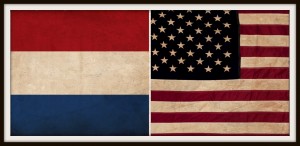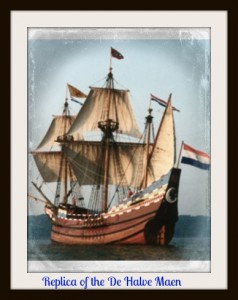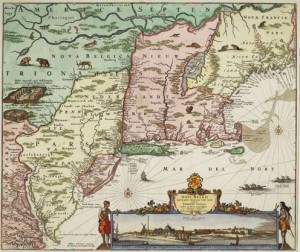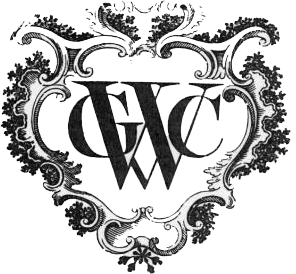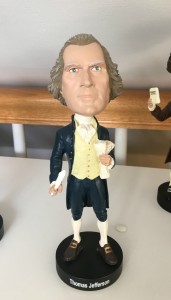 January 7 is National Bobblehead Day.
January 7 is National Bobblehead Day.
In honor of the occasion, I offer you a look at my historic bobblehead collection.
My collection consists of 14 bobbleheads. It started in the late 2000s with Thomas Jefferson.
The collection started with Jefferson because we share a birthday (April 13). Jefferson's birth (and mine) are the only interesting historical happenings on that day. (Seriously, April 13 is a historically boring day. April 12, 14, and 15 are action packed.)
After Jefferson, I acquired John Adams, one of my favorite historical figures.
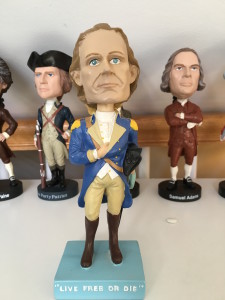
For several months, Jefferson and Adams lived on top of my office bookcase. Friends and family always commented on them when they visited and for the next several Christmases and birthdays I received bobbleheads. Bobblehead gift-giving continues today: this past Christmas (2015) my Dad gave me John Stark, Continental Army colonel and New Hampshire general.
The Collection
Most of my bobbleheads come from a company called Royal Bobbles. However, Henry Hudson and John Stark have different manufacturers.
I picked up Henry Hudson at a Tri-City ValleyCats baseball game in Troy, New York in 2009, the quadricentennial of Hudson's voyage up the North or Hudson River.
My Dad found John Stark at the New Hampshire Historical Society.
In display order:
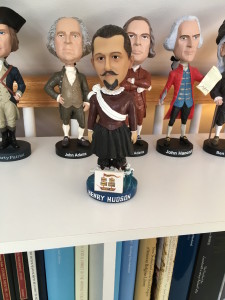
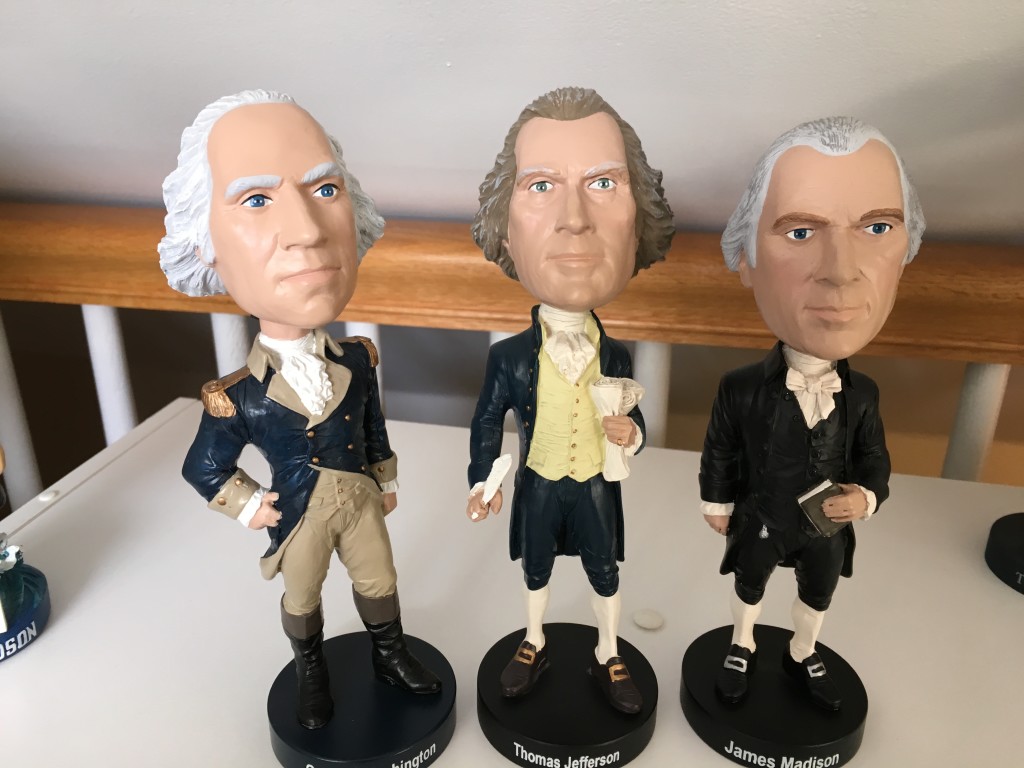
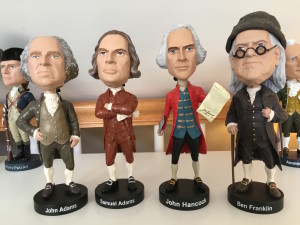
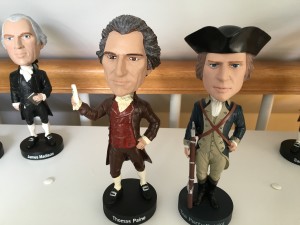
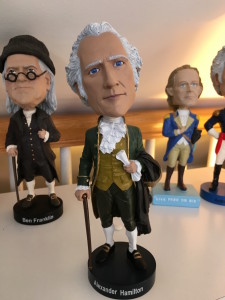
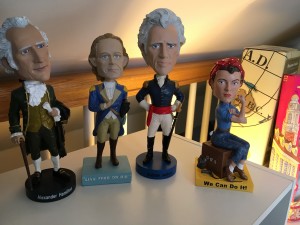
My Wishlist
You may have noticed from the photos that my collection is largely male. I have written to Royal Bobbles over the years to ask if they would make a Founding Mothers series. They seemed intrigued, but it's 2016 and I am still waiting.
I would love to add Abigail Adams, Martha Washington, Dolly Madison, and King George III to my collection.
Yes, King George III. If you have seen Hamilton the Musical, you understand how perfect this would be. Remember Jonathan Groff's shaking head? I watched the show and thought "King George III would make an awesome bobblehead."
Related to the Collection
In addition to my bobbleheads, I also have a bust of John Hancock. A friend gifted him to Tim and I as a wedding present.
In our household, Hancock always roots for the Boston Red Sox.
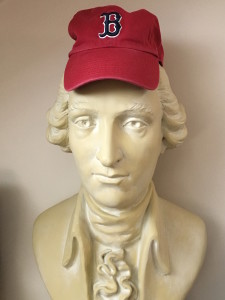
Why I Love My Collection
I love my bobblehead collections because it starts conversations. Every time someone visits my home they see it and comment. Their comment leads to a conversation about history, the founders, and the American Revolution. Over the years, I have had great conversations with friends, family, plumbers, electricians, and other contractors.
The bobbleheads also elicit conversations on social media. On occasion, Tim likes to move my bobbleheads around. Since we saw Hamilton the Musical, I often find Hamilton and Jefferson facing each other with Washington, Madison, and the Bostonians gathered round to watch Hamilton and Jefferson engage in a "cabinet meeting." Sometimes I post pictures of the bobbles' new position on Twitter and Facebook. Many followers comment on the photos.
I love these conversations and I can't wait to have them with my niece and nephew when they get older. I know it is only a matter of time before they ask questions about my "toys." When they do, we will have some fun with history.
Share Your Collection
I showed you mine, now let's see yours!
What historic or other bobbleheads are in your collection?

